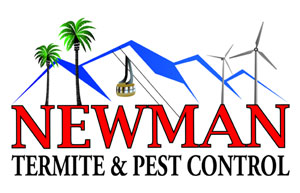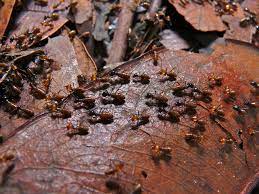Do you ever wonder how termite colonies begin and grow?
In this article, we will delve into the fascinating world of termite colonies and explore the factors that contribute to their formation and expansion.
You’ll discover the crucial role of the termite queen in establishing a new colony, as well as the intricate life cycle of these industrious insects.
We’ll also uncover the process of nest building and examine the influences that drive termite colonization and spread.
Are you ready to dive into the world of termites? Let’s get started!
The Role of the Termite Queen in Colony Formation
The termite queen plays a crucial role in colony formation by laying thousands of eggs daily. As the queen, she is responsible for the reproduction of the entire colony. She releases pheromones that attract and communicate with the other termites, signaling them to perform specific tasks.
The queen’s role in reproduction is essential for the survival and expansion of the colony. She produces pheromones that influence the behavior and development of the other termites, ensuring the unity and organization of the colony.
Through her continuous egg-laying, the queen ensures a constant supply of new termites to support the growth and expansion of the colony. Without the queen’s pheromones and reproductive role, the termite colony would not be able to establish itself and thrive.
The Life Cycle of a Termite: From Egg to Worker
To fully grasp the life cycle of a termite, you’ll need to understand how these pests go from eggs to becoming hardworking members of the colony. Termites undergo a series of growth stages, each with its own unique characteristics and roles within the colony. From the moment they hatch, the young termites receive constant parental care and guidance, ensuring their successful development.
Here is a table summarizing the different termite growth stages and the corresponding tasks they perform:
| Growth Stage | Description | Tasks |
|---|---|---|
| Egg | The initial stage of termite development. | No tasks, still inside the egg. |
| Nymph | The termite molts and becomes a nymph. | Assisting with colony maintenance. |
| Worker | The termite continues to molt and becomes a worker. | Gathering food, building and repairing the nest. |
| Soldier | Some workers molt and become soldiers. | Defending the colony against threats. |
Parental care in termites plays a vital role in ensuring the colony’s survival. By understanding the life cycle and growth stages of termites, we can better comprehend their behavior and implement effective pest control measures.
The Process of Nest Building and Expansion
From the moment termites hatch, you begin building and expanding your nests. Nest architecture is a crucial aspect of termite colonies, as it provides shelter and protection for the entire colony.
As you construct your nests, you communicate through the use of pheromones, chemical signals that allow you to coordinate tasks and maintain the structure of the colony. Pheromone communication plays a vital role in guiding individuals to specific areas of the nest that require attention, such as repairing damaged tunnels or expanding the nest to accommodate a growing population.
Through this process, your colony can continue to thrive and adapt to changing environmental conditions. So, as you work together, using pheromones to communicate, your nests become the foundation for a successful termite colony.
Factors Influencing Termite Colonization and Spread
Factors like environmental conditions, available resources, and reproductive capacity greatly influence termite colonization and spread. These factors play a crucial role in determining where and how termite colonies establish and expand.
To help you better understand this topic, here are three sub-points to consider:
- Environmental Conditions: The climate, temperature, and moisture levels in an area significantly impact termite colonization. Termites thrive in warm and humid environments, making tropical regions ideal for their establishment.
- Available Resources: Termites require wood and cellulose-rich materials to feed on and build their nests. The availability of these resources influences the success and growth of termite colonies.
- Reproductive Capacity: The ability of termites to reproduce and form new colonies greatly contributes to their spread. A single termite queen can lay thousands of eggs each day, allowing for rapid population growth and the establishment of new colonies.
Understanding these factors is crucial for managing termite populations, especially when dealing with invasive species, to minimize their environmental impact.
Interactions Between Termite Colonies: Cooperation or Conflict?
Termites in different colonies may interact with each other through cooperation or conflict. Cooperative behaviors can occur when neighboring colonies share resources or work together to defend against predators. For example, termites may engage in mutual grooming, where they clean and remove parasites from each other’s bodies. This behavior helps maintain the health and hygiene of the entire termite population.
However, territorial disputes can also arise between colonies. When two colonies come into contact with each other, they may engage in aggressive behaviors such as fighting and nest invasion. These conflicts usually occur when termite colonies compete for limited resources, such as food or nesting sites.
Understanding the dynamics of these interactions is crucial for researchers studying termite behavior and for developing effective pest control strategies.
Frequently Asked Questions
What Is the Average Lifespan of a Termite Queen and How Many Eggs Can She Produce in Her Lifetime?
The average lifespan of a termite queen is around 15 to 20 years. During her lifetime, she can produce an astonishing number of eggs. This ranks very high on the top 10 fascinating facts about termites.
On average, a termite queen can lay thousands of eggs per day, which adds up to millions of eggs throughout her reign. This high reproductive capacity is one of the reasons why termite colonies can quickly grow and spread.
How Do Termite Colonies Defend Themselves Against Predators or Other Threats?
Termite colonies defend themselves against predators or threats using various mechanisms. They have developed intricate communication systems to alert each other of danger and coordinate their defense. These systems involve the release of chemical signals called pheromones, which can relay important information about the type and intensity of the threat.
Additionally, termites may also physically defend themselves by using their strong jaws to bite or their soldiers to attack intruders. Through these strategies, termite colonies are able to protect themselves and ensure their survival.
Are There Any Natural Predators That Specifically Target Termite Colonies?
Are there any natural predators that specifically target termite colonies?
Natural predators of termite colonies, such as ants, birds, and reptiles, can have a significant impact on termite populations. These predators often seek out termite colonies as a source of food and can cause a decline in their numbers.
The presence of these predators can also influence the behavior and distribution of termite colonies, as they try to avoid becoming prey. Ultimately, natural predators play an important role in regulating termite populations in the ecosystem.
What Environmental Factors Can Hinder or Slow Down the Growth and Spread of a Termite Colony?
Humidity levels and temperature fluctuations are key environmental factors that can hinder or slow down the growth and spread of a termite colony. These factors can affect the termites’ ability to reproduce and expand their territory.
High humidity can create unfavorable conditions for termites, as they prefer drier environments. Similarly, extreme temperature fluctuations can disrupt their reproductive cycles and limit their foraging activities.
Therefore, maintaining consistent humidity levels and temperature ranges can help control termite populations and prevent further infestations.
Can Termite Colonies Coexist Peacefully With Other Insect Colonies in the Same Area?
Termite colonies can face coexistence challenges with other insect colonies in the same area. Interspecies relationships can be complex and competition for resources may arise.
Without the context of Understanding Termite Colonies: How They Start and Spread, it is important to consider the potential conflicts that can occur between different insect colonies.
Factors such as food availability, territory, and reproductive success can all influence the ability of termite colonies to peacefully coexist with other insect colonies.
Conclusion
So now you understand how termite colonies start and spread. You have learned about the crucial role of the termite queen in colony formation and the life cycle of a termite from egg to worker.
Additionally, you explored the process of nest building and expansion, as well as the factors that influence termite colonization and spread.
Finally, you delved into the interactions between termite colonies, whether they are cooperative or conflictual.
By gaining this knowledge, you can better understand and potentially address termite infestations. You will also know when it is time to seek professional pest control services.

